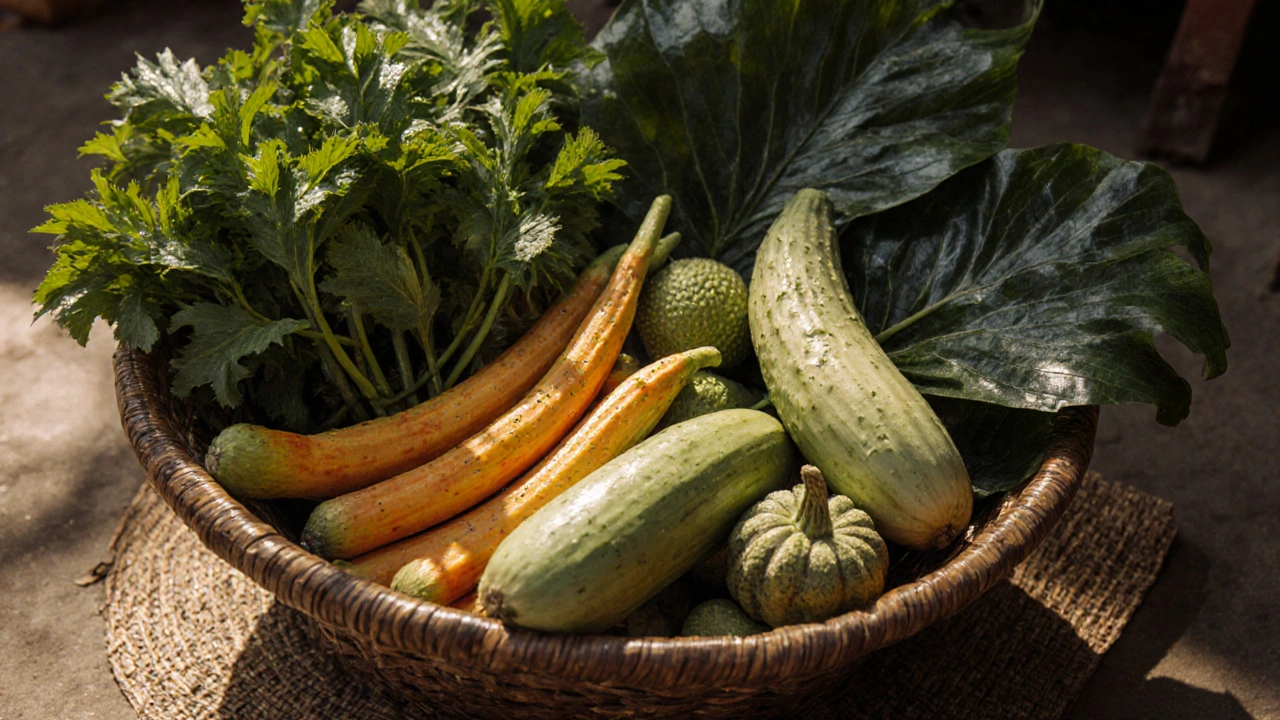Discover India's native vegetables, why they matter, and how to grow them. Get climate tips, a handy comparison table, and step‑by‑step planting guidance.
Native Indian Vegetables: Top Picks, Growing Tips, and Why They Matter
When we talk about native Indian vegetables, vegetables that have been grown in India for centuries, adapted to its soils, rains, and seasons. Also known as traditional Indian crops, they don’t need fancy inputs—they just need the right care and respect for the land. These aren’t imported varieties or hybrid strains designed for long-distance shipping. These are the vegetables your grandparents grew, the ones that taste richer, resist local pests, and don’t break the bank when you plant them.
Brinjal, a staple in Indian kitchens and often called the king of vegetables, is one of the most widely grown native crops. Then there’s amaranth, a leafy green packed with iron and protein, once called "rajgira" and grown in every village. You’ll also find cluster beans, a drought-tolerant legume used in curries and pickles, and bitter gourd, a bitter but powerful vegetable that thrives in monsoon heat. These aren’t just food—they’re part of India’s agricultural DNA.
Why do these matter today? Because modern farming has pushed many of them aside for high-yield, chemical-dependent crops. But native Indian vegetables need less water, no synthetic fertilizers, and still feed families well. They’re perfect for small balconies, terrace gardens, and backyard plots—exactly the kind of spaces more Indians are turning to. You don’t need acres to grow them. A few pots, some compost, and sunlight are enough.
These vegetables also connect to deeper practices—composting kitchen scraps, using natural pest controls, rotating crops to keep soil alive. That’s why you’ll find guides here on how to improve dense soil, make homemade compost, and pick the right plants for year-round harvests. The posts below show you how to grow these native crops the Indian way: simply, sustainably, and successfully. Whether you’re starting your first herb pot or expanding your kitchen garden, the answers are already here—in the soil, in the seasons, and in the plants that have fed India for generations.
